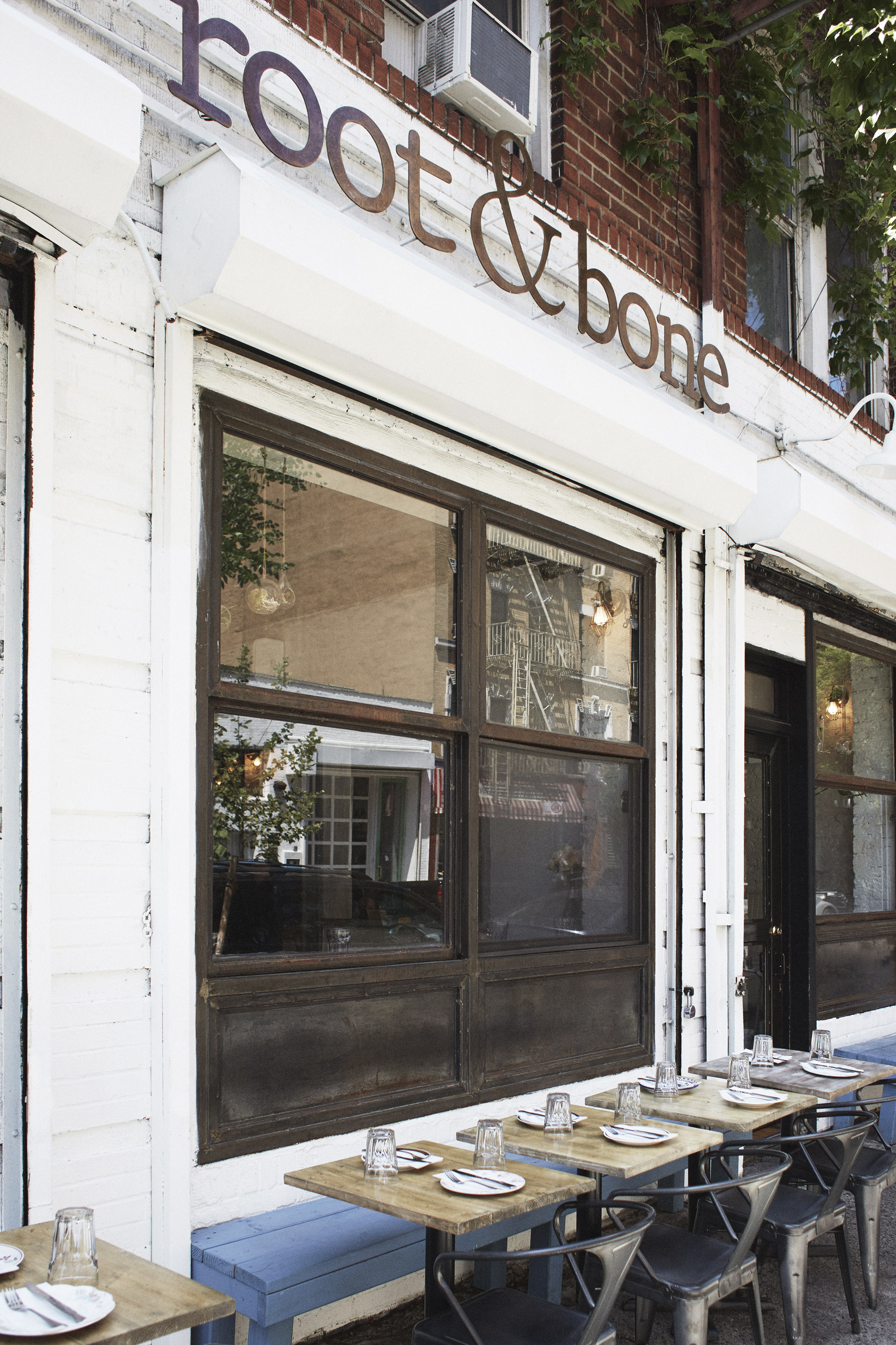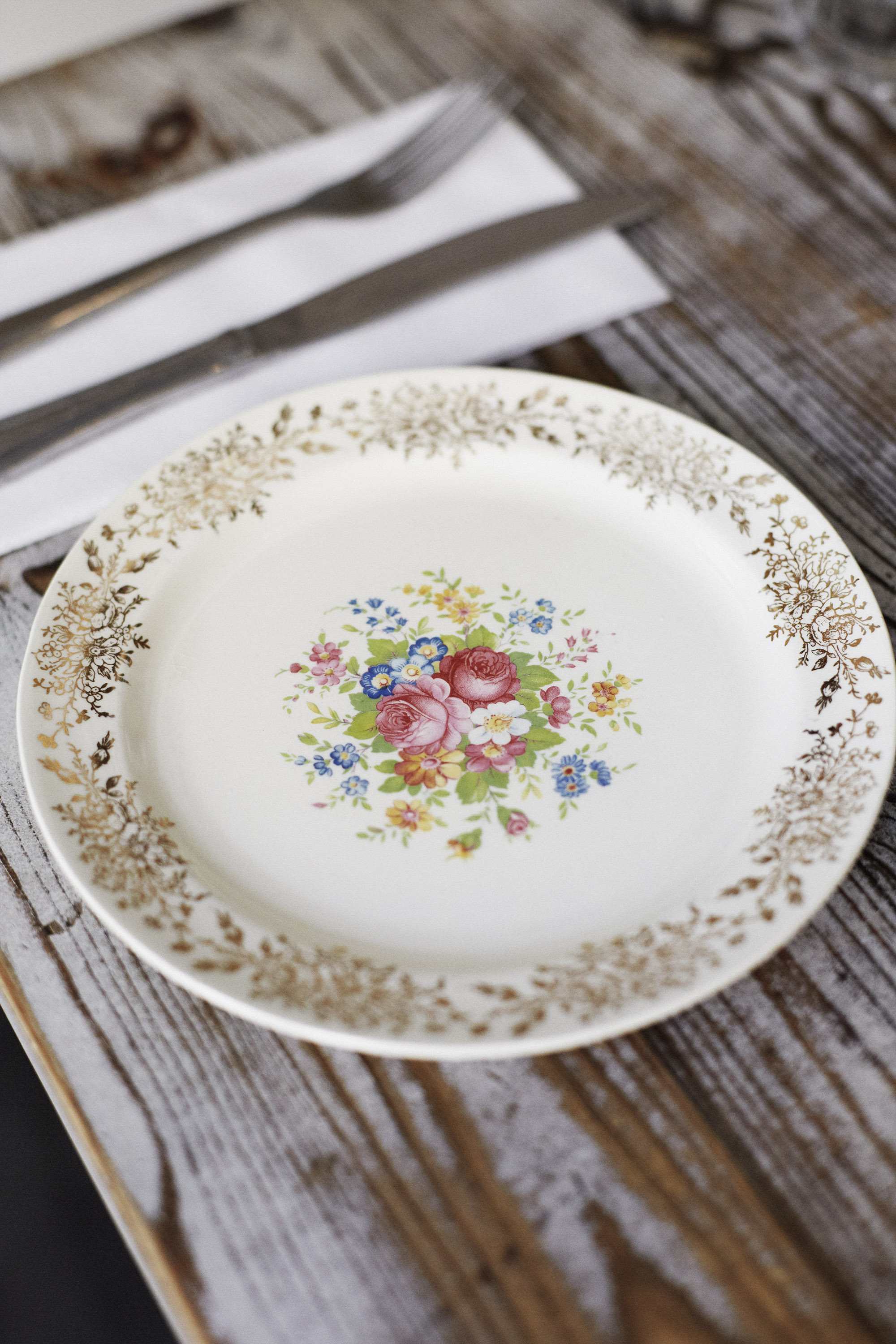WORDS: Eric Buron PHOTOGRAPHY: Julien Roubinet HEADER PHOTO: Kevin Lu
If luck is what happens when preparation meets opportunity, Root & Bone's Executive Chef, Jeff McInnis, hit the jackpot. Growing up poor in Niceville, FL, Jeff's family lived hand to mouth. Out of necessity, he gained the hard earned skills of living by learning to grow, catch and kill his own food. But this self-sufficiency would serve as the foundation for everything to come.
At fourteen he was hired to wash dishes at a seafood restaurant. One day the sous chef, while prepping fish, had an accident with his knife and was rushed to the hospital. Jeff had spent much of his early life fishing and knew exactly what to do. Prior to this moment, he never thought that the skills he'd learned would be used for anything more than his own survival. Here was an opportunity for more and Jeff was prepared. Impressing the head chef with his abilities, Jeff was promoted from washing dishing to food prep to line cook. All in a matter of two years.
Since then, Jeff has opened a number of his own restaurants, including Root & Bone in the East Village, where he now serves the food he was raised on. Farm-to-table has found cultural traction in recent years but for Jeff this way of life is all he's ever known, and a no-brainer for how things should be done.
I met with Jeff at Root & Bone, where we talked about his earliest memory of cooking, the incident that introduced him to the restaurant industry, and how his most recent endeavor is reuniting him with his fishing roots.
Do you remember the very first thing that you made?
Helping my grandma make corn. My Grandma had a big washtub on the front porch that she'd fill with water. We would go get all the corn and throw it in the washtub. Then she had this huge grill and there was a Folgers coffee can of churned butter on the grill and it would sit there, melted hot. She would throw 10 or 20 ears of corn on the grill. She would grab the corn and peel back the layers. Her hands must've been like lead.
Then she would take the corn by the husk, dip it in the coffee can of butter, and hand it to all us kids. I remember grabbing it and running around during the summer with hot butter dripping down my arm.
What inspired you to make?
When I was really young, my Great-Grandma Bryce had a farm in Tunnel Springs, Alabama. She had chickens, guinea hens, geese, and a few cows. She kept the geese separate because they were mean and would actually kill the chickens. They would chase you and pinch you. It was awful.
My Grandma was awesome. Even though she was old she was quick. She would run out, get close to a chicken, and always the slowest chicken was dinner. She'd grab one, turn its neck, put it on the stump, chop its head off, and we would pluck it. We cooked a lot of chicken and poultry.
At a very young age we would harvest eggs in the morning and churn butter. We didn't know that we were dirt poor. Beyond poor. But she had a ton of land and there was a little lake. I remember cooking all the time. We never went to restaurants.
How did you get into the restaurant business?
When I was fourteen I had a job washing boats and scraping barnacles off the bottom. A guy that had one of the boats said, "Why don't you come work for me?” and he gave me a job washing dishes at his seafood restaurant.
One day while the head chef was out of town, the sous chef was cutting up all the fish and his knife slipped and went completely through his hand. He had to be rushed to the emergency room, leaving tons of fish that still had to be cut.
A couple of guys on the kitchen staff tried to cut them but were mangling it. Because I fished, I knew how to properly cut them. So I butchered all the fish and did a great job. The kitchen staff was like, “Who is this dishwasher that just came in and cut all the fish?” When the chef came back in town he let me cut fish and peel shrimp along with washing dishes. From then on, the guys kind of took me under their wing which was the first time anything like that had really happened.
How did Root & Bone come about?
I owned a restaurant in Miami and sold it. It was a really nice restaurant; we had three James Beard nominations and I wanted to give New York a stab while I still had blood pumping through my veins. I'm not young but young enough to take on the challenge.
Two and half, three years ago we started doing the build out for Root & Bone. Janine and I invested everything we had and ran out of money real quick. When we were taking the place apart we found these doors hiding in different places so we took them down and built the bars. I grabbed leftover scaffolding from a job site out of desperation. We took it on the roof, bleached out the wood, scrubbed it, and then used it as framework. Janine and I built everything from scratch.
What’s it like running a restaurant dedicated to seasonal foods in New York City?
New York makes serving seasonal foods easy. There are so many farmers here and tons of farmer's markets. There are a lot of chefs in the community that care and a variety of educational resources.
GrowNYC is a nonprofit that helps ensure public access to fresh, local, healthy foods. They make it easier for farmers to get to the markets; drive a big truck through the middle of town, park, and unload. Things that help the farmers, help us. As a chef at a restaurant, I can't drive to a farm and load up a truck. No chef would be anything without the type of help an organization like GrowNYC provides.
It helped a lot when farm-to-table came around over the past decade. I remember talking with my Grandma and laughing because if you weren't cooking farm-to-table before, what were you doing? Cooking out of a can or a freezer? If you're not cooking farm-to-table then why are you in the industry? I don't think we have a can opener. Growing up, farm-to-table was how we survived and I think I'm a better man for it, not just a chef.
What's the last thing that you made?
The Succotash salad. It doesn't always have to be a salad, but it's usually some form of bean or butter bean, corn, tomatoes, and a medley of all these beautiful colors and vegetables.
How do you decide what's on the menu?
About 35% of the menu is fixed. We don't mess with the fried chicken and the biscuits because that's what we're known for. The rest is very inspirational. We go at least once a week to the farmer’s market in Union Square and it's like a big menu for us. We roll with the seasons and what the farmers bring is what’s in season.
What are some of your current goals?
I have a three-year-old daughter, Bryce, and Janine and I have another baby on the way. My goal is to be a good dad and take care of my family. I just bought a house and it has a little backyard with mango trees and banana trees and all the great stuff that Florida has during the summer. Planning a little garden and trying to give our daughter something as close to what I grew up with. My brother has chickens and he lives down the street so we visit them a lot. My daughter loves chasing the chickens around.
I think any chef would tell you it's a challenge to make enough money in the restaurant business to support a family, especially in New York. Finding someone strong and reliable that you can trust is everything in this business, especially if you want to open more than one place. The real chef is the guy who spends the 17 hours a day there. I have a guy downstairs right now, named Kevin. He's doing a great job. We couldn't do it without him.
We opened a dim sum restaurant in Miami and now we're opening a southern inspired fish house which brings me back to my childhood when I was fishing and cleaning boats. We've got docks and we're opening a fish market inside the restaurant. At 5 o'clock every day the boats will come in and they'll unload all the fish. You're going to be able to come in, pick out your fish, and get it cooked right then and there. Just like I remember.
About MakersFinders
MakersFinders is a social platform that helps people share what they make and find what they love.
We have an app in private beta. We publish stories. We host events. And provide quarterly grants for our community of Makers and Finders.





















